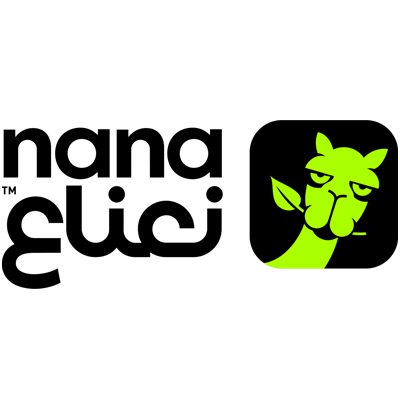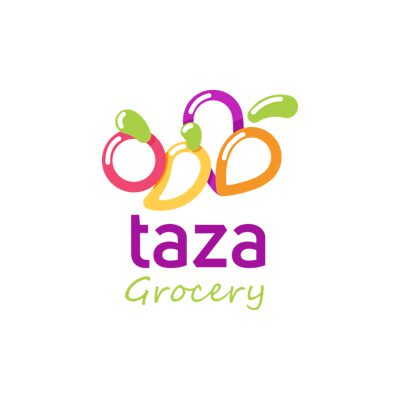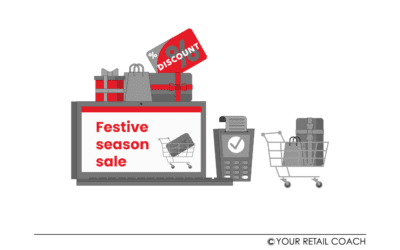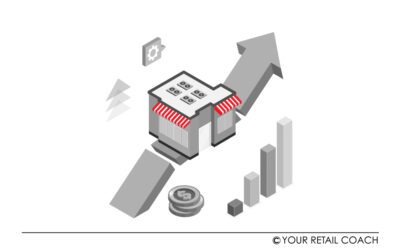Setup Dark Store Business Model
Setup Dark Store Business Model
What Are Dark Stores?
Dark stores are focused on order fulfillment online in areas with massive demand. The location of dark stores is critical for retailers in huge geographical regions and areas. Converting your retail store into a dark store can really benefit you in many ways. According to a Deloitte report, dark stores will play a pivotal role in supply chains ahead, as well. Dark stores are D2C Model (Direct-to-consumer) enabling services like same-day delivery, online purchases or pick-up in stores. Dark stores are fulfillment centers which cater to online orders alone. Customers are offered the convenience of not visiting the store to pick up products and checkout. All they need to do is order online and receive doorstep delivery.
E-commerce is now about instant gratification. Therefore, retailers set up a dark store model to meet customer expectations and respond to customers in real-time across various touch points. Customers now expect retailers to be active, omnipresent, and quick across business channels despite the business model deployed. Concept of dark stores is picking pace in e-commerce, as the online delivery business gains momentum. Consumers now expect a hassle-free retail experience. Same-day delivery within hours or minutes (i.e. 10 minutes delivery) is preferred. Most grocery stores are infusing this concept to decrease cart abandonment rates and increase profits.
The concept of dark stores has been around for a long time now. A lot of e-commerce firms are working on the concept of a dark shop. But what does it take to set up an online fulfillment center? YRC (Your Retail Coach) helps online retailers to come up with the perfect stores to provide a seamless and real-time shopping experience.
How YRC can help to setup dark stores
1. Dark Store Layout Planning
For those seeking to understand how to start an online dark store, a store layout plan is critical. Dark stores require decent space to accommodate products in massive quantities. A retailer store network serves as a valuable candidate for a dark store location. Shops under-performing in ineffective locations can really thrive, if they are converted into dark stores. A dark store should be located in densely populated regions, close to large numbers of present customers. Retail stores are laid out based on commercial factors and product category groupings. According to YRC, while you develop a dark store, consider parameters to drive efficiency based on time and motion study. Through pallet pick locations, and rear fill shelving, along with fast, slow, medium or bulky product groupings, significant rise in picking efficiency results. Ensuring the right pick face capabilities based on sales velocity ensures replenishment is minimized. Further, YRC strategists understand site requirements vary across home delivery dark stores to standalone drives.
Home delivery dark stores require dark warehouse facilities, besides space to accommodate delivery vans in fleets and offer massive loading positions. Not enough external space can lead to massive issues. That is why YRC consultants can help you choose locations with excellent transport linkages and access to massive local labor pools. Stand-alone drives need smaller plots, but bespoke buildings with car parks, located near high traffic routes and major intersections. So, the layout of a dark store depends on retail objectives, and YRC can help to create the perfect online dark store with its repertoire of impressive skills, planning capabilities and analytical frameworks in place. To know more
2. Process Manuals / SOPs
Defining the product proposition is important. It is imperative to understand the desired product proposition before a dark store is designed. For this reason, process manuals or standard operating procedures (SOPs) to manage the same are absolutely essential. SOPs for the nature and size of product assortments impact site design. SKUs drive storage and picking space requirements, besides the types of shelves and racking. Split of temperature regimes also matter. SOPs can be in place for launches, to decide on implementing on-site bakeries, meat stores and food counters to implement dark store assortments. As the services are labor intensive, you need to have SOPs in place to guide staff and ensure dark stores are system dependant. Skilled staff require SOPs for training, performance of job duties and the use of expensive equipment such as weighing scales, slicing machines, and ovens. Careful phasing of product assortment, particularly fresh goods, requires SOPs to mitigate high levels of wastage.To know more
Process manuals/ SOPs also come with operational benefits. Defining the service proposition, SOPs are conducive to effective implementation of end-to-end retail solutions.
Decisions to take while you start a grocery delivering company or while setting up an online dark store or include whether it will only serve the local customer base or act as a fulfillment hub for delivery orders. Customer lead times from order to delivery collection also need to be documented, for effective functioning of a darkstore. The primary focus can range across home delivery or click and collect, but SOPs from the YRC team enable daily operations to be mapped effectively to understand bottlenecks or constraints ahead of detailed design.
3. Inventory Replenishment Planning
The grocery segment remains among the most challenging sectors of the retail market in present times. Some reasons why increasing consumers buy groceries online include convenience and home delivery. Increasing interest of consumers to buy grocery online has ensured retailers launch internet-based grocery selling channels. Grocery delivery from dark store is facilitated through the online route. Grocery dark stores (also called: dark grocery stores or dark store grocery) serve to fulfill order fulfillment and delivery with ease. Leading retailers like ASDA and Tesco have come up with darkstores to fulfill grocery orders online. Dark stores are a boon, but one critical challenge is inventory management and replenishment. From the perspective of the retailer, setting up dark stores is cheaper, as opposed to a dedicated warehouse. Orders can be picked up from dark stores, too
Retailers, therefore, need to ensure management and order fulfillment systems can handle this model. The window of fulfilling online orders from dark stores is short. Therefore, the order management system should be able to send real-time inventory updates to websites. They should also monitor inventory in real time and replenish it quickly to reduce lost sales due to out-of-stock items. YRC’s team of experts can help in monitoring and regulating inventory for your dark store, setting up inventory and order management systems to modify picking slots, when orders are set to be picked up and when they are not. Inventory management systems, according to YRC specialists, should be able to handle situations when customers do not collect orders in scheduled times. Scheduling and releasing the order for picking up to a dark store based on order creation or other priorities set by a business is important. Issues pertaining to order modification like addition of new products, cancellation etc. can also be managed through inventory monitoring systems, even if the order is ready for picking. YRC’s team of retail experts can help your dark store to handle order fulfillment, allowing customers to return products to either dark stores, or the closest supermarket store. YRC business consultants can also help in quality maintenance, especially for fragile or chilled items.
Repurposing the existing warehouse to dark store warehouse operations to meet online consumer demands is easy with YRC’s team on the job! To know more
4. Time & Motion Analysis to ensure low manpower and high output
Dark stores need data analytics to gain insights into customer behavior, and adjust internal processes to suit customer preferences. Even prior to the placing of the order, analytics help retailers to stock popular items and ensure these are easily accessible. YRC retail business analysts use sophisticated analytics to examine variables like order fulfillment time, order accuracy, and inventory and picking data like ergonomics and motion studies to create more efficient processes.
Benefits of time and motion analysis from YRC include lowering manpower count and increasing output. Such analysis also helps to develop an ideal time for each and every internal process. It also provides a base for incentive schemes.
To provide the ideal method for completing a particular procedure or process, YRC can help your dark store personnel through time and motion studies. This also serves to increase productivity, providing a standard of performance for measuring labor efficiency. This helps in increasing cost control through proper production management. When standard time benchmarks are set, management can also single out ineffective performance or cases of idle time. In this way, YRC can help your dark store business to grow.
5. Security measures to avoid theft
Security measures must also be in place to avoid theft. Having systems, processes and procedures in place to prevent pilferage and waste management are essential. Security measures are devised by YRC experts to ensure your products, services and systems are streamlined. This also serves to protect your online dark store from unwanted intrusions, theft and siphoning of goods from dark warehouses. From setting up security guidelines to implementing them, YRC can help your dark store model to safeguard its resources and products from theft and embezzlement.
6. Dark Store setup Guidelines stating: What to do & What not to do
Guidelines to set up dark store and do’s and don’t of dark store management can be easily formulated, with reports and guidance from the YRC team. A complex model of warehousing retail is followed in darkstores. Balancing the retail model in a way that ensures efficiency and cost-efficiency is essential. Traditional warehouse facilities have zeroed in on transportation centers, but dark store concepts require warehousing near client bases. This increases demand on city-based warehousing, which is at a premium. Demand forecasting and operational management are some of the many aspects where YRC specialists can formulate strategies, techniques and methods to minimize loss and maximize profits.
7. Planogram
For improving the performance of your dark convenience store business model, a planogram must be in place. Planograms make it possible to place more products on shelves, address consumer demands better, and address needs more professionally than competitors. Planograms designed by the YRC team help in reduction of out-of-stock products, triggering greater revenue and higher customer satisfaction.
Better balance between shelf inventory and consumer demand lowers cost. Planograms also optimize shelf layouts stimulating purchasing behavior through more revenue. A consistent image and marketing message leads to better client satisfaction and greater loyalty. This leads to improved use of retail space, and higher returns on investment. This promotes use of staff during shelf resets lowering cost and lessening inconvenience for consumers.
For retailers, too, planograms by YRC experts can help trigger more purchases, more revenue, offering more influence on assortment and space allocation, leading to better ROI in marketing activities. Increased success with product introductions lead to higher distribution levels, and lower marketing costs. It also fosters better relationships with trading partners, with less focus on relative margins and greater ROI. This leads to better insight in the performance of competition through strategic advantage.
8. System IT Integration Strategy
When retailers transition from retail models to dark store ecommerce model, legacy picking systems must be carried over, too. Dark retail stores need order management systems (OMS) and Auto Replenishment System (ARS) for procurement management. IT integration is another area the team at YRC can help your dark store business. For instance, consider automation. As with any warehouse operations, automation offers increase in capacity and productivity. But implementing such technologies carries a risk. Dark store operations require outbound crate storage or sortation and picking, many times, too. For these technological innovations, dark store management system is essential, and this is why YRC comes in. YRC can help you to reach stable footing before investing in software and infrastructure.
9. Manpower Recruitment Assistance
Online grocery order lead times are short, more so for standalone drives. Ensuring plenty of staff for order fulfillment is essential. This is because it is difficult to predict customer demand, more so for new operations. Ensuring flexible employee contracts and effective selection, recruitment, onboarding and training programs can be easily attained, with YRC’s assistance. Your dark store can generate trained pools of human capital at short notice to minimize labor costs.
10. Customer Order, Darkstore Fulfillment to Last Mile Delivery: Strategy & Processes
Your competitor will serve new customer needs, if your business does not. Multichannel offerings increase wallet share. Customers online and in stores spend twice as much as customers only shopping in stores, according to McKinsey. Online offerings need to attract higher-value customers. Convergence has occurred on the transaction side in mobile and website navigation. YRC serves to better improve how the offer is presented and products are suggested. Grocery Delivery App, Customer App/website features, functionalities and ergonomics need to be leveraged, as do app services. Last-mile delivery is the key here
Logistics choices depend on existing assets, capital expenditure capacity and heritage. Last mile delivery is leading to the dark store e-commerce revolution, impacting warehousing and logistics. Adapting warehouse space for dark store changes the dynamics of warehouse space. Warehouse retailing changes the transport patterns in dark stores, through click and collect activities. By stacking items in dark stores organized for ease of picking, supermarkets (also called: dark store supermarkets or dark supermarket) offer the best of both worlds – easy e-commerce, online fulfillment and delighted shoppers. Apps and websites for optimal darkstore fulfillment and logistics, not to mention transactions, require careful planning and implementation. YRC experts form wireframes & AI (Artificial Intelligence) strategy that enables mobile app and website to function optimally and boost the reach of your dark store ecommerce business. Click and collect points, or last mile delivery in dedicated vehicles are some of the routes the order distribution takes.
Effective order management and inventory management systems can help dark store retailers to optimize both order processing and customer experience simultaneously. Through clear inventory management, dark store retailers can route the request to the right store. Apps and websites must have functionalities to offer real-time automated updates. Dark retail stores and the technologies to support these retail innovations are still evolving. Investing in technologies, infrastructure and space is not easy. YRC’s consultants make it simple. Start an online delivery business, with store to home delivery, with assistance of YRC’s experts. If you’re looking for a retail consultancy you can rely on, e-commerce consultants from YRC can help to get the job done. Online supermarket dark store consulting is the specialty of Your Retail Coach consultants. Contact YRC business consultants to know more about retail dark store business.
Case Study
FAQs
What is a dark store model ? What are dark stores in retail?
A dark store business model is a retail strategy where a physical store or a portion of a store is converted into a fulfillment center for online orders. In other words, dark store meaning is a retail store that is not open to the public and operates solely for the purpose of fulfilling online orders. Dark stores are often located in densely populated areas to enable faster delivery of products to customers.
The dark store business model has gained popularity in recent years especially post-covid due to the growth of e-commerce and the increasing demand for same-day or next-day delivery. This model allows retailers to efficiently manage inventory and fulfill online orders quickly, leading to improved customer satisfaction and increased sales. Dark stores are commonly used by grocery stores (also called as: dark grocery stores) and other retailers that offer perishable products or have a large volume of inventory. Going forward Dark Store concept shall be adopted by fashion, eletronics and home goods retailers also, to cater the “instant gratification” demand of the consumers and gain competitive edge over other players.
Planning to start grocery delivery business. How can YRC help?
- Dark Store Layout Planning (Click here to watch explanatory video)
- Process Manuals/ SOPs (Click here to watch explanatory video)
- Inventory Replenishment Planning (Click here to watch explanatory video)
- Time & Motion Analysis to ensure low manpower and high output (Click here to watch explanatory video)
- Dark Store setup Guidelines stating: What to do & What not to do (Click here to watch explanatory video)
- System IT Integration Strategy
How to start a grocery delivery business that can delivery fast?
05 things that you can do, to reduce your dark store delivery time to less than 30 minutes:
1: Location of Dark Store
2: Inventory Placement
3: Efficient Picking Process
4: Efficient Last-mile Delivery
5: Manpower Planning
6: Dark Store Location Planning
(Click here to watch explanatory video)
How to start a grocery delivery service? or How to start a grocery delivery business
04 Steps to Set up a grocery delivery service:
Step 1: Business Model
Step 2: Dark Store Layout
Step 3: Organogram & SOP Designing
Step 4: Mobile App. development & Software Integration
(Click here to watch explanatory video)
Is grocery delivery business profitable?
Grocery delivery business (the dark store model) is need of the hour. It is profitable within Tier-I & II cities where there are more nuclear families & millenials age group looking for instant gratification for grocery needs.
One major factor which drives profitability is “repeat order”. Higher the repeat orders eventaully “lower the Customer Acquisition Cost (CAC).
Many brands fail to achieve repeat orders especially during inital years because of poor systems which leads to customer dissatisfaction.
Thus, proper launch planning and go-to market stratgy can safeguard the brand reputation and encourage repeat buying.
What is the startup cost of grocery delivery business?
The cost to start a grocery delivery business depends on following factors:
- Delivery Model (slot delivery, same day delivery, next day delivery, 15 minute delivery, etc)
- Product type & product mix (food and non-food categories)
- Size and location of the dark store
- Business Niche/ UVP, if any (which can impact the technology investment)
- Vision of scale you wish to achieve (business architecture needs to be designed accordingly)
If you have the answers to the above factors, then you can work with YRC dark store consultants to derive the budgets and investment to start a grocery delivery business. The business plan can be helpful to raise funds too from investors or banks.
Get Advice for Set Up Dark Store
Related Blogs
Making the most out of the festive season shopping: A Customer Perspective for Retailers
Decoding the Festive Shopping Spree For us, as customers, the festive season is a licence to spend. The vibes of festivity ushers with joy and a sense of celebration. This elevated mood often turns into an enhanced willingness to spend and indulge in shopping. It is a...
Mitigating Business Risks in Retail
Spotting the Swirls Sailing the stream of retail is canopying between opportunities on the surface and risks as the current of that stream. If the bad swirls are not spotted in advance, it can turn things undesirable. While big brands grapple with issues like lapses...
How Retailers are Enhancing Customer Experience (CX) with Hyper-Localisation
Hyper-localisation is an alignment strategy that helps retail brands and businesses mould into the requirements of a locality-based market environment. Marketing-wise, it helps retailers tailor their value propositions to cover the needs and expectations of highly...







We work only for Visionaries.